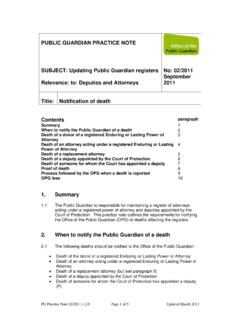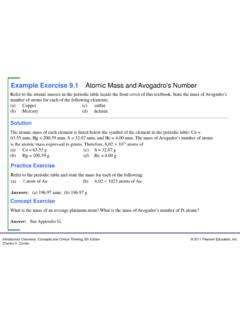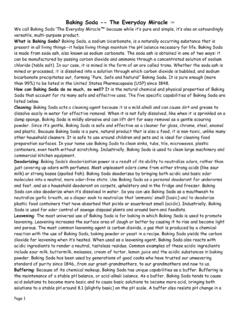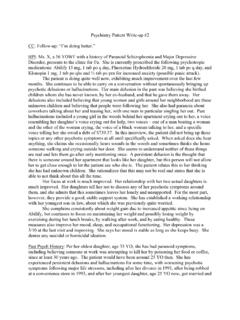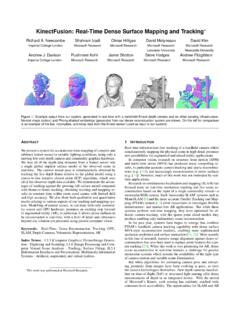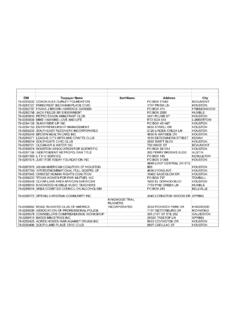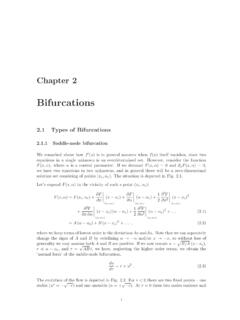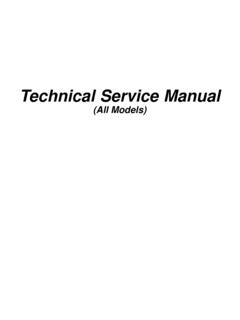Transcription of BSC 2011 MENDELIAN GENETICS PROBLEMS
1 BSC 2011 . MENDELIAN GENETICS PROBLEMS . The following PROBLEMS are provided to develop your skill and test your understanding of solving PROBLEMS in the patterns of inheritance. They will be most helpful if you solve them on your own. However, you should seek help if you find you cannot answer a problem . Most of these PROBLEMS are fairly simple, yet mastering their solutions will provide the background to solve many genetic puzzles and will strengthen your understanding fundamental principles of GENETICS . A. PROBABILITY. 1. You and your spouse have no children.
2 You stand to inherit a sizeable fortune from your crazy Uncle Irving if you can produce three daughters in your family of three children. What is the probability of doing just that? 2. If you could convince Uncle Irving that simply having three children all of the same sex would do, then what would be the probability of your receiving the inheritance? 3. In quest of the family stipulated in #2 above, you produce a boy as your first child. Now what is the probability of inheriting the fortune? 4. Why are the answers to #2 and #3 the same?
3 B. MONO-, DI-, AND POLYHYBRID CROSSES; DOMINANCE AND RECESSIVENESS. In all of the following PROBLEMS , capital letters will be used to denote a dominant trait, and lower-case letters will be used for the recessive trait. 5. In peas, seeds may be round (R) or wrinkled (r). What proportion of the offspring in the following crosses would be expected to be wrinkled? a. RR x rr b. Rr x Rr c. Rr x rr 6. In peas, seeds can be round (R) or wrinkled (r) and either yellow (Y) or green (y). Stem length may result in a tall (T) or dwarf (t) plant.
4 A. In the cross (parent A) TTYyRr x TtYyRr (Parent B), how many different types of gametes can be produced by each parent and how many different phenotypes are possible from the cross? a. What proportion of the offspring from the cross in part a would be tall with yellow, wrinkled seeds? c. In the cross TtYYRr x ttYYrr what proportion of the offspring would be expected to be tall plants with round, yellow seeds? 7. For the purpose of this problem assume that in humans the gene for brown eyes is dominant to that for blue eyes. a.
5 A brown-eyed man marries a blue-eyed woman, and they have eight brown-eyed children. What are the genotypes of all the individuals in the family? b. What is the probability that the first child produced in parents who are both heterozygous for brown eyes will be blue-eyed? c. If the first child is a brown-eyed girl (same parents as in b), what is the probability that the second child will be a blue-eyed boy? 8. Assume that D, E, F, G, H, and I are autosomal genes on different chromosomes. From the mating (parent A) DdeeFfGGHhIi x (parent B) DdEEFFGgHhii: a.
6 What is the probability that one of the offspring will have the genotype DdEeFFGghhIi? b. What is the probability that one of the offspring will be heterozygous for each allele? c. How many different kinds of gametes can be produced by each parent? C. INCOMPLETE DOMINANCE. 9. In cattle, RR = red, Rr = roan, and rr = white. What are the predicted color phenotypes and their frequencies for the offspring from crosses between: a. a red bull and a white cow b. a red bull and a roan cow c. a roan bull and a roan cow 10. Given the following information about the inheritance of characteristics in pea plants, answer the questions below: Y (yellow) is dominant to y (green).
7 R (round) is dominant to r (wrinkled). B (bitter) is dominant to b (sweet). S (smooth) is dominant to s (hairy). L (long pod) shows incomplete dominance to 1 (short pod) (Ll is medium in length). Given this cross: (P1) Yy Rr Bb SS Ll (male) x yy RR Bb Ss Ll (female). a. How many different gametes can be formed by the female plant? b. How many different genotypes are possible in the F1 offspring? c. How many different phenotypes are possible in the F1 offspring? d. What percent of the F1 individuals will be green, bitter, and smooth _____.
8 Hairy, medium, and sweet _____. round, bitter, and long _____. D. MULTIPLE ALLELES. 11. In humans, the ABO blood groups are controlled by three alleles (only two of which occur in any one individual): the alleles for A and B. type blood are co-dominant toward each other, and both are dominant to the allele for O type blood. a. If a person with type AB blood marries someone with type O blood, what are the possible phenotypes of their offspring? In the following, determine the genotypes of the parents: b. One parent has type A and the other has type B, but all four blood groups are represented in the children.
9 C. One parent has type AB and the other has type B, but of the children 1/4 have type A, 1/4 have type AB, and 1/2 have type B. 12. In the following cases of disputed paternity, determine the probable parent. a. Mother is type B, child is type O. Father #1 is A; father #2 is AB. b. Mother is type B, child is type AB. Father #1 is A; father #2 is B. 13. A woman with type A blood has parents who are both type AB and a husband who is a type B. What is the probability that their first child will be a son with type O blood? E. MULTIPLE GENES.
10 14. In cocker spaniels, the following genotypes and phenotypes are found: AABB = white A-bb = red aabb = lemon AaB- = black aaB- = liver AABb = grey a. A red female is mated with a liver-colored male, and one of the pups produced is lemon-colored. What are the genotypes of the parents? b. What proportion of these offspring would be expected to be black? a. A black male is mated with a liver-colored female, and they produce the following pups: a. 3/8 black 1/8 red 3/8 liver-colored 1/8 lemon-colored What are the genotypes of the two parents?

